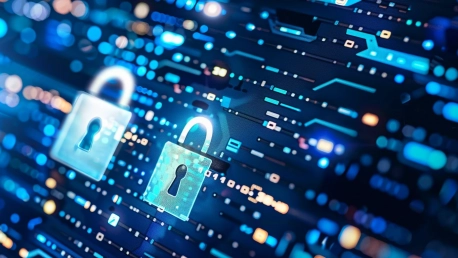The world of digital security was rocked by a recent incident involving The New York Times (NYT). A substantial amount of internal source code, infrastructure tools, and IT documentation—amounting to 273GB of data—was leaked online, raising significant questions about cybersecurity practices and resilience.
The Incident and Immediate Response
Initial Discovery and Event Details
The breach unfolded with unauthorized access to NYT’s GitHub repository, facilitated by an exposed GitHub token. This lapse in security led to the release of a staggering 273GB of proprietary information onto an internet message board, casting a spotlight on the vulnerabilities that even leading institutions face in safeguarding their digital resources. Content from about 5,000 repositories became public, which alarmingly includes source code for the popular Wordle game. The breach exemplifies the immense challenge organizations confront in protecting their codebases, even as they rely increasingly on cloud-based platforms for development and collaboration.
NYT’s Stance and the Security Experts’ Views
In an official statement, The New York Times sought to reassure the public and stakeholders, insisting that the breach had no operational impact thanks to rapid detection and response. This claim, however, was met with skepticism from security experts who swiftly pointed out the inherent risks. The leaked source code is more than just an embarrassing slip; it’s a treasure trove for cybercriminals. Security analysts warn that within those reams of leaked data lie potential vulnerabilities waiting to be exploited, potentially paving the way for more severe and targeted cyberattacks against the NYT or even its digital allies.
Implications of the Source Code Leak
Risks and Exploitation of Vulnerabilities
The implications of the NYT source code leak are vast and troubling. Cybersecurity professionals stress that such leaks can provide attackers with actionable insights into the structure and weaknesses of an organization’s digital defenses. By scrutinizing the source code, malicious actors could identify vulnerabilities ripe for exploitation, enabling them to orchestrate a variety of cyber offenses — from advanced persistent threats to strategic denial-of-service attacks. With the very framework of NYT’s digital infrastructure laid bare, the risks extend far beyond intellectual property theft.
Secondary Threats Beyond Code Exposure
The aftermath of the breach isn’t confined to the immediate exploitation of any vulnerabilities within the leaked code. It proceeds to a more insidious form of threat that gnaws at the foundation of an organization’s security. These concerns point to the possible extraction of sensitive data, tokens, and passwords that, if unchecked, could serve as a continuous source of compromise. This not only jeopardizes The New York Times but also threatens the broader ecosystem of partners, vendors, and consumers associated with it, highlighting the extensive ripple effects one breach can have across the digital landscape.
Lessons in Cybersecurity Best Practices
Strengthening Defenses against Token Abuse
In light of this high-profile breach, it has become clear that GitHub, an integral part of the modern software development lifecycle, is not immune to token abuse. To thwart such incidents, the implementation of multi-factor authentication (2FA), regular token rotation policies, and strict access controls based on the principle of least privilege are fundamental. Moreover, diligent employee offboarding procedures and advanced log monitoring are crucial to identify and neutralize unauthorized access swiftly.
Proactive Measures and Security Postures
Experts are adamant that organizations must adopt a proactive approach to cybersecurity, especially concerning their cloud-based repositories. Key recommendations include performing a thorough source code review to detect any signs of tampering and adopting a multi-layered defense strategy. This should include a combination of cutting-edge technological defenses and robust policy frameworks. By doing so, companies fortify their defenses against the multifaceted threats facing the cloud and software development platforms today.
Cultivating a Cybersecurity Culture
Importance of Continuous Monitoring
The New York Times leak underscores the essential need for continuous monitoring and tracking of digital assets, setting an alert system for the earliest signs of a breach. Moreover, a sophisticated monitoring system equipped with anomaly detection and automatic threat neutralization capabilities can be invaluable in the fast-paced digital world where threats continually evolve and become more sophisticated. Institutions must remain vigilant, with eyes open to even the slightest aberrations in their digital ecosystem.
Recommendations for Organizational Security Strategy
The cybersecurity realm was shaken by a momentous event concerning The New York Times (NYT). In a stunning leak, a massive deluge of the organization’s most sensitive digital assets was exposed. This comprised a staggering 273GB of proprietary code, vital operational tools, and comprehensive IT documentation. The repercussions of this massive data breach extend far beyond the compromised files, triggering a thorough examination of existing cybersecurity measures across industries.As organizations scrutinize the vulnerability exposed by the incident, there’s an increasing awareness about the robustness of digital defense strategies. This extraordinary breach emphasizes the necessity for heightened security protocols and underscores the continuous threat that cyberattacks pose to private and proprietary information. The incident serves as an urgent reminder to corporations and institutions worldwide to reassess and fortify their cybersecurity frameworks to prevent such breaches.The NYT’s experience is a stark warning about the consequences of digital complacency and will likely prompt a wave of reinforcement and innovation in cybersecurity practices. Moving forward, the emphasis on safeguarding digital infrastructures from similar incursions will be paramount. This includes implementing rigorous security checks, educating personnel on potential vulnerabilities, and investing in cutting-edge technologies to avert future security failures.









